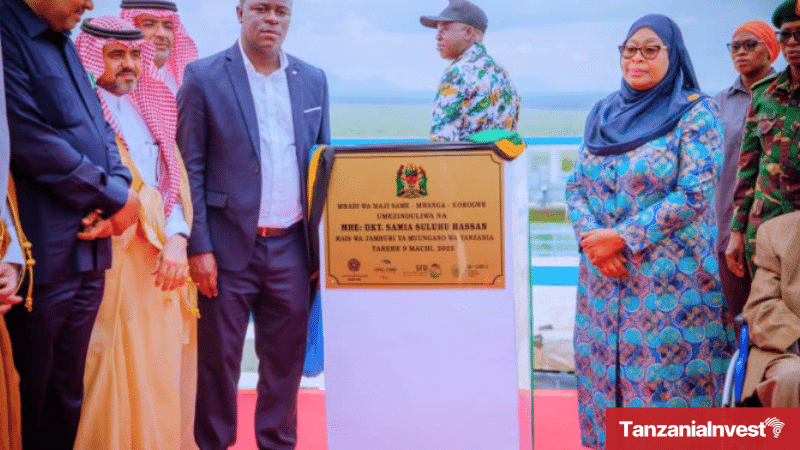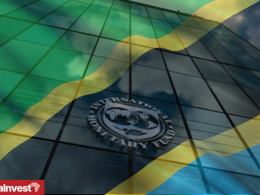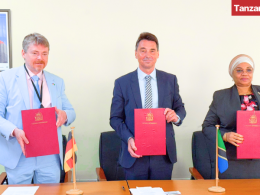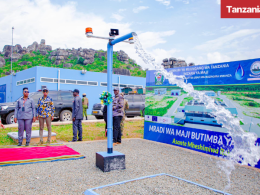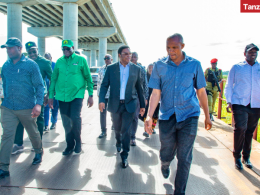President Samia Suluhu Hassan has officially launched the Same-Mwanga-Korogwe Water Project in Kilimanjaro and Tanga regions.
The project is valued at TZS 406.07 billion, with TZS 244.10 billion in loans, and the Government of Tanzania contributing TZS 161.97 billion.
It is set to provide over 51.6 million liters of clean water per day to more than 300,000 residents across 38 villages in the three districts.
The water is sourced from the Nyumba ya Mungu Dam and will support the agricultural and economic development of the region and improve public health by reducing waterborne diseases.
The project includes a pipeline network of over 150 kilometers in the districts of Same and Mwanga, with plans for further extensions into Korogwe.
With a population spread across semi-arid areas, this new water supply system is expected to significantly boost productivity and improve the living standards of the local communities.
During the launch event, President Samia emphasized the importance of ensuring sustainable access to clean water for Tanzanians. She highlighted that the use of prepaid meters was particularly noted as a measure to empower local communities to manage their water consumption and costs effectively.
She also thanked development partners, including the Arab Bank for Economic Development in Africa (BADEA), the OPEC Fund for International Development (OFID), the Kuwait Fund for Arab Economic Development, and the Saudi Fund for Development (SFD) for their contribution to the successful implementation of the project.
For his part, the Minister of Water, Jumaa Aweso (MP), mentioned that, so far, rural water service coverage has reached 83% of the target of 85%, while urban areas have achieved 91% of the target of 95%, as per the manifesto’s guidelines to be met by December 2025.
Initial feasibility studies for the Same-Mwanga-Korogwe Water Project were completed in 2006. The construction officially started in 2014 but faced delays due to funding challenges and logistical issues.
Under President Samia Suluhu Hassan’s administration, the project was revived as part of a broader effort to complete stalled infrastructure projects. The government secured concessional loans and restructured the project to ensure its completion. By 2024, the first phase of the project was operational, supplying water to some areas.





